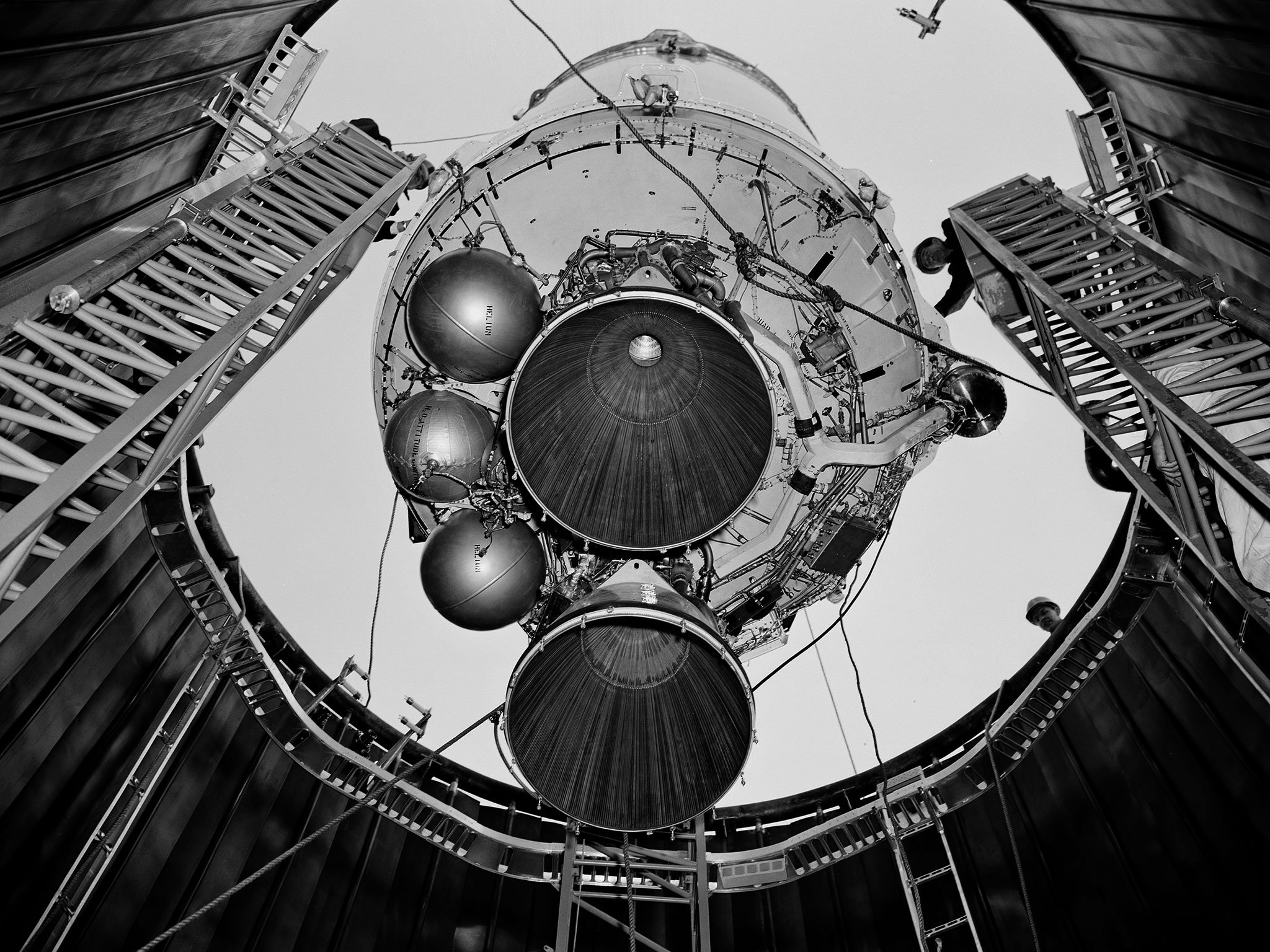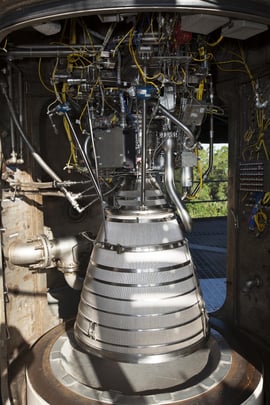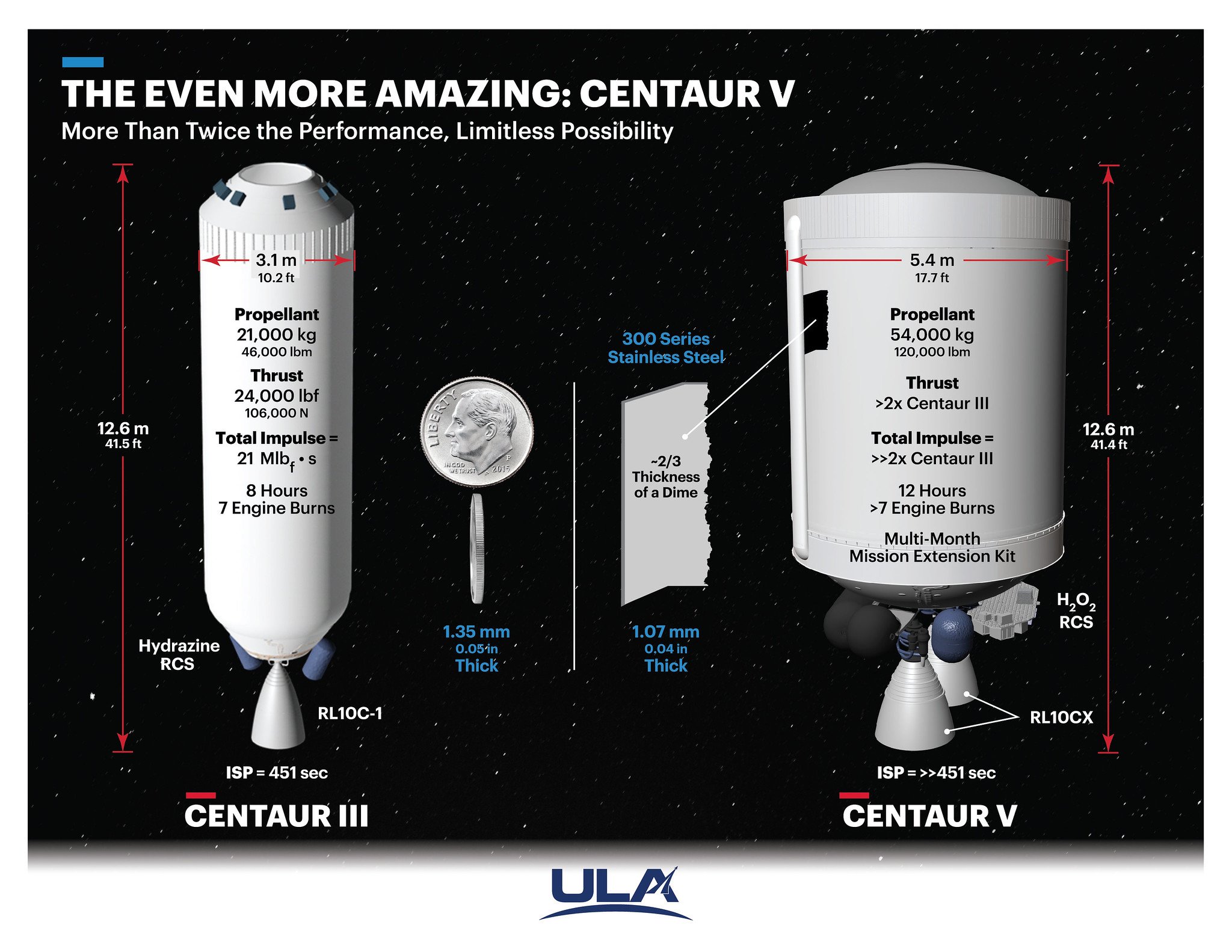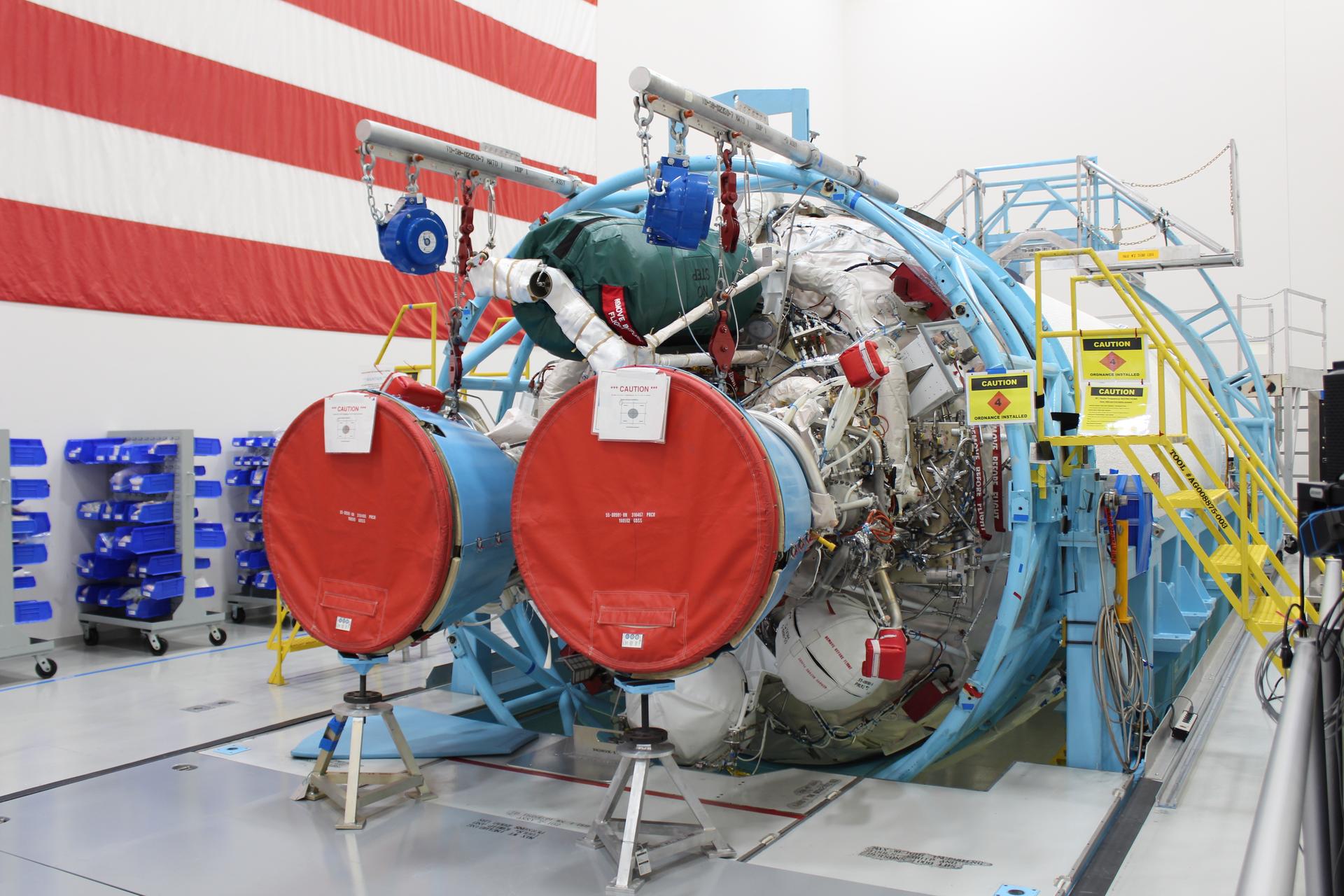The venerable United States upper stage rocket that created the pathway to the Moon and every planet across the solar system – the United Launch Alliance (ULA) Centaur and its RL10 engine from Aerojet Rocketdyne, an L3Harris Technologies company – are marking 60 years of their successful pairing.
Centaur, originally developed by General Dynamics under the direction of NASA's Lewis Research Center at the dawn of the space age, was conceived to power payloads with a high-energy cryogenic engine fed with liquid hydrogen and liquid oxygen (LH2/LO2).
 Since successfully debuting in November 1963, Centaur and the RL10 makes it possible for the U.S. to launch spacecraft of greater size and weight over other upper stage designs. Hydrogen serves as the difference maker, offering more pounds of thrust per pound of propellant consumed per second than any other fuel possible in chemical rockets.
Since successfully debuting in November 1963, Centaur and the RL10 makes it possible for the U.S. to launch spacecraft of greater size and weight over other upper stage designs. Hydrogen serves as the difference maker, offering more pounds of thrust per pound of propellant consumed per second than any other fuel possible in chemical rockets.
The stage was at the forefront of advancing rocket technology by conquering cryogenic fuels, a key accomplishment that benefited a host of different space boosters to follow. That top-notch efficiency remains today.
Centaur pioneered space launch for the last 60 years. The first launches on Atlas boosters in the early 1960s demonstrated the extremely high performance that can be achieved with an LH2/LO2 rocket stage. LH2/LO2 was subsequently used on the Saturn I, Saturn V, Space Shuttle, Titan, Delta and Space Launch System (SLS) programs.
Centaur developed and flight demonstrated in-flight restarts for such cryogenic engines -- a technology that was critical for the Apollo programs and for enabling a wide variety of flexible mission designs.
The project had a difficult development. Insulating the Centaur to preserve the super cold liquid hydrogen propellant at -423 degrees F was a major challenge and keeping the fuel "bottomed" in the tank for in-space relighting of the engine proved temperamental. Success came on the second launch in November 1963, injecting the Centaur into Earth orbit where it continues to loop today in an elliptical perch.
Successful single-burn missions were repeated over and over, then a good restart of the engine in orbit occurred on flight 10 as the Centaur moved closer toward perfection.
Centaur has delivered scientific missions to explore the Sun, our Moon, asteroids and every planet in our solar system. The first operational payloads were Surveyor between 1966 and 1968 that sent a series of landers to touch the surface of the Moon.

Other notable early spacecraft that successfully reached orbit aboard Centaurs were the Orbiting Astronomical Observatory ultraviolet telescope, Mariners 6 and 7 that performed photo reconnaissance flybys of Mars in 1969 and Mariner 9 that became the first spacecraft to enter orbit around another planet -- Mars -- in 1971.
Then came Pioneers 10 and 11 on mankind's first journey to explore the outer solar system, launching on Atlas-Centaurs from Complex 36 at the Cape Canaveral, Florida in March 1972 and April 1973, respectively. Pioneer 10 made the first-ever close encounter with Jupiter in December 1973 before being flung out on an escape trajectory from our planetary neighborhood. Pioneer 11 also visited Jupiter before continuing to make the first flyby of Saturn and getting sent on its own escape path.
At the end of 1973, Mariner 10 took off to cruise by Venus and use that planet's gravity as a sling shot to venture further inward in the solar system to become the first craft to visit Mercury.
In addition to NASA scientific probes, Centaurs were flying in the early days on communications spacecraft deployment flights for Intelsat, the International Telecommunications Satellite Organization.
Centaurs also married up with Titan boosters, propelling the Viking 1 and 2 orbiter/lander combo missions in 1975 for their treks to Mars. The four spacecraft operated in orbit and on the surface from 1976 through the early 1980s, returning more than 50,000 photos from the red planet.
Further exploits to the outer solar system -- Voyagers 1 and 2 -- also rode Centaurs atop their Titan rockets from Cape Canaveral in the summer of 1977. Both visited Jupiter and Saturn, then Voyager 2 continued on a grand tour to fly by Uranus and Neptune.
 In more recent years, high-profile missions like Cassini to Saturn, Mars Reconnaissance Orbiter, New Horizons to Pluto, Juno to Jupiter and the Mars rovers Curiosity and Perseverance have gotten successful starts on Centaur. The first U.S. asteroid sample-return mission, OSIRIS-REx, and asteroid explorer Lucy also were launched by Atlas-Centaur.
In more recent years, high-profile missions like Cassini to Saturn, Mars Reconnaissance Orbiter, New Horizons to Pluto, Juno to Jupiter and the Mars rovers Curiosity and Perseverance have gotten successful starts on Centaur. The first U.S. asteroid sample-return mission, OSIRIS-REx, and asteroid explorer Lucy also were launched by Atlas-Centaur.
The rocket stage even went to the Moon on a crashing experiment, called Lunar Crater Observation and Sensing Satellite (LCROSS), to impact a crater in the South Pole to search for evidence of water ice.
There's also been countless commercial communications satellites, geostationary weather observatories, military and classified spacecraft and the X-37B orbital spaceplane that got to orbit thanks to the reliability of Centaur and its RL10 engines.
Centaurs have come in dual-engine and single-engine versions, serving multiple variants of Atlas and Titan, flying 247 times on Atlas and 23 times on Titan. The next generation is Centaur V that will launch atop Vulcan rockets.
The RL10 has flown 522 production engines on Centaurs, plus other launch vehicles such as Saturn rockets, Delta upper stages and the SLS's Interim Cryogenic Propulsion Stage (ICPS).
The first RL10 engine was designed to generate about 15,000 pounds (66.7 kilo-Newtons) of thrust. Upgrades and advancements to Centaur V's RL10C-1-1A used on the new Vulcan rocket produces 23,825 pounds (106 kilo-Newtons) of thrust to push payloads to Earth orbit and beyond.

The overall Centaur stage architecture today is fundamentally the same as the versions flown in the early 60s -- with a thin-walled, less than the thickness of a dime -- stainless steel pressure-stabilized structure that provides the most weight-efficient stage possible, and the Centaur is still powered by the very reliable and proven RL10 engine. The new Centaur V for the Vulcan rocket enables 2.5 times the energy and 450 times the endurance of its predecessor.
All the components, subsystems and overall capabilities have evolved dramatically over the last 60 years. The RL10 engine performance has improved substantially, and the chamber pressure has doubled. The vacuum-tube based ignition system has been replaced with a solid-state, fault tolerant system. The hydraulic actuators for steering the RL10 engine have been replaced with fault-tolerant electromechanical actuators.

 Back To Blog List
Back To Blog List



